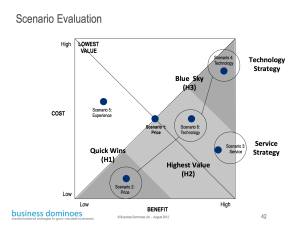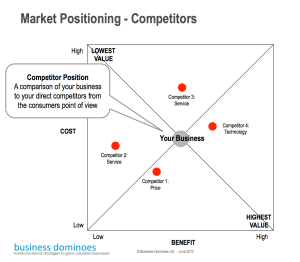The “she’ll be right” era is gone; it is no longer good enough to make business decisions based on gut and napkin calculations.
Does your business use formal business cases to make major decisions?
“Just Do It” – Doesn’t cut it any more
In an economic environment of tight margins, rapid change and competition, there has never been a better time to put in place some improved business discipline and robust decision making. Many businesses are actively growing in this climate.
One of the easiest ways to de-risk your business and make better decisions is to business case out all major decisions. This does not have to mean bureaucracy overload. Give yourself the benefit of an independent review panel to critique and provide feedback before progressing on major investments. The process of writing a business case will in itself create a better investment choice.
A project business case should stand up to robust debate, albeit from your board, bank manager or life partner before expending your time, passion and money. Some major decisions that warrant a business case are: starting or purchasing a new business venture or product line and rationalising your product offering to improve focus or buying a major asset. Create a business case when failure of the project is going to hurt!
Too many business owners continue to fund projects without calculating true payback and considering long-term implications of their business. Many of these become “the living dead”, “throwing good money after bad”.
Ignore the value of money over time at your peril.
Let’s take an example: your IT manager just approached you with a $100,000 project offering $20,000 savings each year over the next 7 years. Basic maths says YES, spend $100K to save $140K, so “let’s just go for it”. BUT what about the cost of that money over time? If your opportunity cost of capital is over 13% you are actually going to make a loss on this project.
If you invested $100K for 7 years with compound interest you would expect more than $100K back including interest, so you should with your IT project, or business itself. Check the Internal Rate of Return (IRR) or net Present VALUE (NPV) functions in Excel Help. With a little bit of help, you can use these calculations to automatically calculate for you the “true cost”.
As a business owner, or custodian for the business (Managers), it is your responsibility to create shareholder wealth and protect the long-term sustainability of your business, identifying and eliminating risk to your best ability.
Pre-mortem Reviews
Many businesses perform post-mortem reviews on projects, analysing what did and didn’t work in projects. How about having one of these meetings before the project begins? By publishing your project budgets, plans, risks and assumptions in many cases you can actually improve the project by simply asking “what could go wrong?” Given the chance, people will help you avoid disaster before it happens.
Our very enthusiasm for an idea will drive us to success, but equally so unchallenged we can quickly be over consumed with that euphoria to our peril. Do a basic investment test now.
4 Point investment test?
- What evidence (trends & market validation) do you have of the long-term need for your product /service? (Strategic Market Opportunity)
- Have you calculated what the “true” return for your investment will be, including the cost of capital (Financial Business Case) i.e. will you make money from it?
- Have you clearly communicated to your team what you do and do not do? (business /project plan) i.e. will your team be able to stay focused on the task ahead?
- Do you have a clear and succinct message to engage customers and stakeholders (Your pitch) i.e. can you sell it?
Common mistakes made in businesses cases
Check that you are not falling into common traps for business owners prior to making business decisions:
- Not creating a business case or having a 3rd party review it
- Overly optimistic projections: delivery times, customer acquisition times etc
- Inadequate budget for sales and marketing – budget at least 10% revenue
- Not accounting for the value of money over time – use NPV and IRR calculations
- No market research / validation to de-risk savings, or projected revenue.
- Underestimating the impact of competitive response
- Lack of stakeholder commitment or talent
- Not dreaming big enough – what could you do with twice the investment?
Don’t think of business cases as just approval mechanism, but more so as a mechanism to reduce investment risk. Business Cases provide an opportunity to clarify thinking, get input and focus for the project delivery team around clear outcome.
New training workshops for 2013: I am now also delivering workshops under the Auckland Chamber’s Vital Training programme.
If you would like to know more about tool’s and techniques to simplify business decision-making and gain greater clarity in your business, then you should attend my Auckland Chamber Vital workshops: Business Planning, Business Cases and Pitching More information is on the Vital Training Website The next Business case workshop is 4th April at the Auckland Chamber – register here













